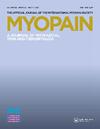Fibromyalgia Literature Review
引用次数: 0
Abstract
It has been shown that pathophysiology of fibromyalgia syndrome [FMS] involves disturbed neuroendocrine function, including impaired function of the growth hormone/insulin-like growth factor-1 axis. Recently, micro ribonueclic acids [RNAs] have been detected to be important regulatory factors in a number of diseases. The aim of this study was to try to identify cerebrospinal microRNAs with expression specific for FMS and to determine their correlation to pain and fatigue. The genome-wide profile of microRNAs in cerebrospinal fluid was assessed in 10 women with FMS and eight healthy controls using real-time quantitative polymerase chain reaction. Pain thresholds were examined by algometry. Levels of pain [FIQ pain] were rated on a 0–100 mm scale [Fibromyalgia Impact Questionnaire [FIQ]]. Levels of fatigue [FIQ fatigue] were rated on a 0–100 mm scale using the FIQ and by the multidimensional fatigue inventory [MFI-20] general fatigue [MFIGF]. Expression levels of nine microRNAs were significantly lower in patients with FMS patients [n1⁄4 10] compared with healthy controls [n1⁄4 8]. The microRNAs identified were miR-21-5p, miR-145-5p, miR-29 a-3p, miR-99b-5p, miR-125b5p, miR-23 a-3p, 23b-3p, miR-195-5p, and miR223-3p. The identified microRNAs with significantly lower expression in FMS were assessed with regard to pain and fatigue. miR-145-5p correlated positively with FIQ pain [r1⁄4 0.709, p1⁄4 0.022, n1⁄4 10] and with FIQ fatigue [r1⁄4 0.687, p1⁄4 0.028, n1⁄4 10]. This study highlights a disease-specific pattern of cerebrospinal microRNAs in 10 FMS patients as compared with eight healthy controls. One of the identified microRNAs, miR-145, was associated with the cardinal symptoms of FMS, pain, and fatigue. This very interesting finding needs confirmation in studies with larger cohorts.纤维肌痛文献综述
研究表明,纤维肌痛综合征(FMS)的病理生理涉及神经内分泌功能紊乱,包括生长激素/胰岛素样生长因子-1轴功能受损。近年来,微核糖核酸(rna)被发现是许多疾病的重要调控因子。本研究的目的是试图鉴定FMS特异性表达的脑脊髓microrna,并确定它们与疼痛和疲劳的相关性。采用实时定量聚合酶链反应对10名FMS女性和8名健康对照者的脑脊液中microrna的全基因组谱进行了评估。痛阈测量法测定。疼痛水平[FIQ疼痛]按0-100毫米量表评定[纤维肌痛影响问卷[FIQ]]。使用FIQ和多维疲劳量表[MFI-20]一般疲劳[MFIGF]在0-100毫米范围内评定疲劳水平[FIQ疲劳]。FMS患者9种microrna的表达水平[n1⁄4 10]明显低于健康对照组[n1⁄4 8]。鉴定的microrna为miR-21-5p、miR-145-5p、miR-29 a-3p、miR-99b-5p、miR-125b5p、miR-23 a-3p、miR-195-5p和miR223-3p。在FMS中鉴定出的表达明显较低的microrna在疼痛和疲劳方面进行了评估。miR-145-5p与FIQ疼痛[r1⁄4 0.709,p1⁄4 0.022,n1⁄4 10]和FIQ疲劳[r1⁄4 0.687,p1⁄4 0.028,n1⁄4 10]呈正相关。这项研究强调了10名FMS患者与8名健康对照者的脑脊液microrna的疾病特异性模式。其中鉴定出的microrna之一miR-145与FMS的主要症状、疼痛和疲劳有关。这个非常有趣的发现需要在更大规模的研究中得到证实。
本文章由计算机程序翻译,如有差异,请以英文原文为准。
求助全文
约1分钟内获得全文
求助全文

 求助内容:
求助内容: 应助结果提醒方式:
应助结果提醒方式:


